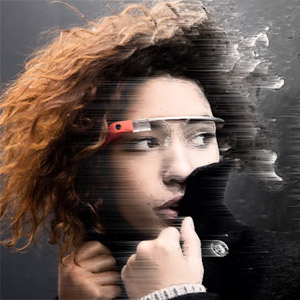 NEWS
NEWS
 NEWS
NEWS
 NEWS
NEWS
![]() The newest threat to public privacy is barely out of the gate and already speculation is wild about how Google glass will be used. Thoughts on how it will lead to a black eye or being banned from a bar have already been leveled; but its certainly not the first wearable, streaming camera to be invented–it’s just the best-case for one to end up in the consumer market. Niche cases for the use of Google Glass instantly spring to mind–from anthropologists to journalists to activists–and it’s the latter that have been stewing amidst all the examples.
The newest threat to public privacy is barely out of the gate and already speculation is wild about how Google glass will be used. Thoughts on how it will lead to a black eye or being banned from a bar have already been leveled; but its certainly not the first wearable, streaming camera to be invented–it’s just the best-case for one to end up in the consumer market. Niche cases for the use of Google Glass instantly spring to mind–from anthropologists to journalists to activists–and it’s the latter that have been stewing amidst all the examples.
Modern day protest and activism has become a dangerous place, arguably largely because of what happens when a lot of people end up in one place at the same time and as well as the repeated, bad actions of law enforcement. Already Occupy Wall Street (OWS) and other protesters have visited the idea of activism and citizen journalism on the front lines of large scale protests by using smartphones and live streaming–but it’s nothing compared to the surveillance capabilities of law enforcement agencies.
I’ve seen more than enough photographs of protests where multiple cameras are being held on the crowd by police officers on the sidelines, often behind shield-and-truncheon-wielding armored officers. The results of what their cameras see is almost never known to the public unless the intent is to prosecute a protester (and rarely ever one of the officers.) The “surveillance state” as it might be called displays a wide use of technology and because of the highly organized nature of big city police it also means they’ve got an entire IT department backing up their data collection.
Protestors, especially emergent-community groups such as OWS have no such thing. They’re loosely organized people coming together out of common cause, lending bodies, voices, and talents without a central organization pooling resources, setting budgets, or keeping track of logistics. Yet, out of OWS and other recent protests we’ve seen what citizen journalism can do with crimes committed by both participants and police being recorded by people on the scene–we wouldn’t know much about Tony Bologna, a name that will go down in infamy, without smartphone cameras rolling.
The example of the meteorite that exploded over the Russian town Chelyabinsk provides a clear interest for a particular level of recording. Due to the fact that Russians commonly have dashcams in order to get better insurance premiums also means that we have lots of footage of the meteorite from a myriad of angles and distances. The London riots in 2011 saw an entire new class of journalism with photographs and videos from everyday citizens. Even New York and Hurricane Sandy saw a change in the narrative of disasters and disaster recovery through social media and highly connected video technology.
Having that sort of coverage of a big event such as a protest at G20 or outside a political convention could change the way activist protest movements interact with the world; as well as change how the public understands the power dynamic between protesters and police forces.
And then will come countermeasures
Much of the doom-and-gloom about Google Glass is that it will bring us into a dystopian panopticon–and we’re certainly heading that way with social media, cameras in smartphones, CCTV everywhere, and the previously mentioned police recording crowds. Activists and OWS will be using their own surveillance to counteract the surveillance of the state–but people don’t like being recorded, and even police officers are people. Different states also have strange and bizarre uses of law about what can and cannot be recorded–some succeed in giving people more privacy in the wake of this technology and some step all over it.
People who record the police frequency find themselves harassed, singled out, or targeted. Photogs get their cameras taken, bullied to delete their files, or even confiscated. Those who do record at protests are sometimes directly targeted by police in order to make it more difficult for protesters to generate their own factual narrative about events. Now that’s nearly impossible when a majority of the crowd lifts their smartphones whenever a fight breaks out or police move onto the scene. Wearing Google Glass in a protest make once-again single out people from the crowd.
Law enforcement might start using jamming technology to trim or silence wireless at protests to make communication more difficult. It’s been done before by deactivating private infrastructure to blunt an expected protest on BART trains.
Finally, Google Glass does have one problematic point-of-failure: Google itself. Anytime people keep tying themselves into one monolith (no matter how useful) it sets them up for having their input exposed or easily cut off. No doubt, if Glass makes the impact on the market and culture everyone believes it will there will be many competitors on the market and hopefully also adjunct services that also escape from Google.
THANK YOU